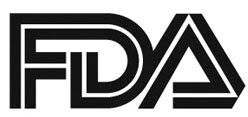FDA Approves Atezolizumab Plus Chemotherapy for Treatment of Patients With mNSCLC
The FDA has approved the combination of atezolizumab in combination with carboplatin plus nab-paclitaxel chemotherapy for the treatment of patients with metastatic nonsquamous non–small cell lung cancer, according to a press release from Genentech USA, Inc.<br />

The FDA has approved the combination of atezolizumab (Tecentriq) in combination with carboplatin plus nab-paclitaxel (Abraxane) chemotherapy for the treatment of patients with metastatic nonsquamous nonsmall cell lung cancer (mNSCLC), according to a press release from Genentech USA, Inc.
The approval was based on data from the IMpower130 study, in which the median overall survival (OS) was 18.6 months in patients treated with atezolizumab plus chemotherapy versus 13.9 months in those treated with chemotherapy only in the intention-to-treat wild-type (ITT-WT) population. The atezolizumab combination also showed a significant reduction in the risk of disease progression or death compared with chemotherapy only. The median progression-free survival (PFS) was 7.2 months in the combination group versus 6.5 months in the chemotherapy group. (HR, 0.75; 95% CI, 0.630.91;P= .0024) in the ITT-WT population.
Earlier data was published inThe Lancet, in November of this year and showed significant improvement in median OS with atezolizumab/carboplatin/nab-paclitaxel compared with chemotherapy alone. The hazard ratio for OS was 0.79 (95% CI 0.64-0.98; P= .033) in the ITT-WY population. The median progression-free survival (PFS) was 7.0 months in the atezolizumab-plus-chemotherapy group versus 5.5 months in the chemotherapy only group, (HR, 0.64; 95% CI, 0.54-0.77; P<.0001).
Treatment-related serious adverse events (AEs) were observed in 24% of patients who received atezolizumab plus chemotherapy (n = 112) and 13% of those of patients in the chemotherapy only group (n = 30). The most common grade 3 or worse AE was neutropenia in both groups, with 152 cases (32%) in the atezolizumab/carboplatin/nab-paclitaxel group compared with 65 cases (28%) in the chemotherapy group. Grade 3 anemia was observed in 138 patients (29%) versus 47 (20%), respectively; corresponding rates of decreased neutrophil count were12% versus 8%.
Overall, 8 patients (2%) died as a result of treatment-related AEs in the atezolizumab plus chemotherapy group. There was 1 patient death (1%) in the chemotherapy only group.
Subgroup analyses were done in patients based on tobacco-use history, presence of liver metastasis, and PD-L1 status. In the patients in the atezolizumab-plus-chemotherapy group versus the chemotherapy-only group, respectively, the median OS was 20.8 months versus 19.7 months in those who never used tobacco; 18.1 months versus 13.9 months in patients who use or previously used tobacco; 21.1 months versus 15.2 months in individuals without liver metastasis; and 10 months versus 8.8 months for those with liver metastasis. Additionally, the median OS was 17.3 months versus 16.9 months for PD-L1high tumors; 23.7 months versus 15.9 months for PD-L1–low tumors, and 15.2 months versus 12 months for PD-L1–negative disease, in patients in the atezolizumab plus chemotherapy versus chemotherapy-only arms, respectively.
“We are pleased to offer this Tecentriq-based combination as a new treatment option that can provide a clinically meaningful survival benefit for people with non-squamous non-small cell lung cancer,” said Levi Garraway, MD, PhD, chief medical officer and head of Global Product Development. “Today’s approval offers another opportunity to help prolong the lives of people with this type of the disease.”
The study included 724 patients aged 18 years and older and who were randomized 2:1 to arm A of atezolizumab with carboplatin and nab-paclitaxel or arm B of nab-paclitaxel and carboplatin. There were 451 patients in arm A and 20 patients in arm B. In arm A, atezolizumab was administered at 1200 mg on day 1 of each 21-day cycle. Patients also received 6mg of carboplatin on day 1 of every 21-day cycle and 100mg of nab-paclitaxel on days 1, 8, and 15 of each 21-day cycle in arm A.
Participants in arm B received the same dosage and treatment duration of nab-paclitaxel and carboplatin as arm A. In some cases, these patients received switch maintenance to pemetrexed within 6 weeks of day 1 of the last induction cycle.
The 2 primary endpoints of the study were PFS and OS. The study also evaluated the percentage of patients with an objective response, complete response, and partial response; the duration of response; and the percentage of participants who were alive at years 1 and 2 as key secondary end points.
The eligibility criteria for IMpower130 included individuals with histologically or cytologically confirmed stage IV non-squamous NSCLC, adequate liver function, measurable disease as defined by RECIST v1.1, and an Eastern Cooperative Group performance status of 0 or 1. These patients had previously obtained archival tumor tissue or new tissue biopsy at screening and could not have received prior treatment for stage V non-squamous NSCLC.
The key exclusion criteria included active or untreated central nervous system metastases and malignancies other than NSCLC.
IMpower130 is expected to conclude by the close of 2019, on December 28.
References
- FDA Approves Genentech’s Tecentriq Plus Chemotherapy (Abraxane and Carboplatin) for The Initial Treatment of Metastatic Non-Squamous Non-Small Cell Lung Cancer [press release]. San Francisco, California: Genentech; December 3, 2010.https://bit.ly/2OLqoyb. Accessed December 3, 2019.
- West H, McCleod M, Hussein M, et al. Atezolizumab in combination with carboplatin plus nab-paclitaxel chemotherapy compared with chemotherapy alone as first-line treatment for metastatic non-squamous non-small-cell lung cancer (IMpower130): a multicentre, randomised, open-label, phase 3 trial.Lancet Oncol.2019;20(17):924-937. doi: 10.1016/S1470-2045(19)30167-6.